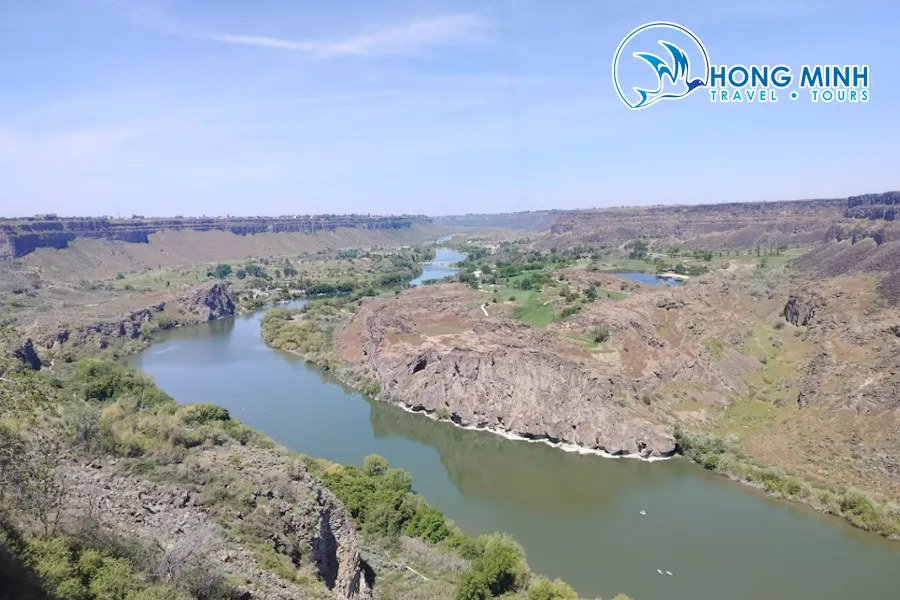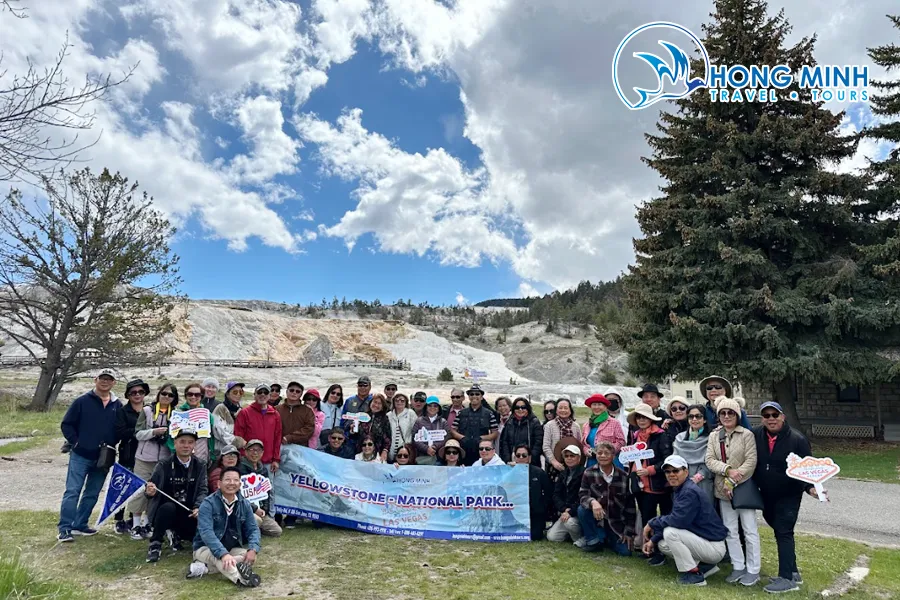Montana, with its untouched beauty and harsh climate, is not only a dream destination for those passionate about exploring majestic nature but also a paradise for wildlife photography enthusiasts. Especially in winter, Montana transforms into a stunning stage to admire and capture memorable moments of the rare snowy owl. With its pristine white plumage, bright yellow eyes, and dignified, mysterious appearance, the snowy owl is not only a symbol of the Arctic but also an endless source of inspiration for photographers. This article, from the perspective of an expert at “Du lịch khắp thế gian” (Travel the Globe), will share tips and experiences for photographing snowy owls in Montana, helping you create impressive and valuable works.
Ideal Timing for Snowy Owl Photography in Montana
To have a successful snowy owl photography trip, choosing the right time is crucial. Snowy owls are migratory birds, and they typically come to Montana in winter when food sources in the Arctic become scarce. The period from late November to early March is the golden opportunity to spot these “white ghosts” in Montana.
During this time, the weather in Montana is quite cold and harsh, with snow blanketing everything. However, these special weather conditions create a magnificent backdrop for photographing snowy owls. Images of white owls standing out against the white snow, or perched on bare branches, offer a beauty that is both wild and refined.
Additionally, the time of day also significantly affects snowy owl photography. Early morning and late afternoon are when snowy owls are most active. This is when they hunt or move between feeding areas. The light at these times is also softer and warmer, creating ideal conditions for capturing photos with beautiful colors and high contrast.
Snowy Owl “Hotspot” Locations in Montana
Montana boasts vast and untouched lands, providing an ideal habitat for snowy owls. However, not every area makes it easy to spot these birds. Below are some locations recommended by professional photographers to increase your chances of encountering snowy owls:
- Farmlands and Grasslands: Snowy owls prefer open, airy areas where they can easily observe and hunt prey such as voles, rabbits, and other small rodents. Rural areas with extensive farmlands and grasslands in Montana, especially the Bitterroot Valley, Flathead Valley, and Bozeman area, are potential destinations.
- Airports: It may sound strange, but airports are actually attractive locations for snowy owls. The large open spaces around airports often have many rodents living there, creating a plentiful food source for snowy owls. Besides, the open space at airports also helps snowy owls easily observe and avoid dangers. Missoula Montana Airport (MSO) and Bozeman Yellowstone International Airport (BZN) are airports you can try searching.
- Wetlands and Lakes: Although snowy owls mainly hunt on land, they sometimes also visit wetlands and lakes to forage or rest. Areas like Flathead Lake, Ninepipe National Wildlife Refuge, and Bowdoin National Wildlife Refuge could be stopover points for snowy owls during their migration.

Preparing Your Snowy Owl Photography “Arsenal”
To capture sharp and impressive snowy owl photos, preparing the right photographic equipment is extremely important. Below is a list of essential “weapons” in your snowy owl photography gear:
- Camera: A DSLR or mirrorless camera with a good sensor, excellent low-light performance, and fast shooting speed is the top choice. Professional or semi-professional camera models from Canon, Nikon, Sony, Fujifilm, etc., all meet these requirements well.
- Lens: A telephoto or super-telephoto lens is a powerful “assistant” to help you capture close-up photos of snowy owls from a distance without frightening them. Lenses with a focal length of 400mm or longer and a large aperture (f/2.8, f/4, or f/5.6) are ideal. If possible, telephoto zoom lenses like 100-400mm, 200-500mm, or 150-600mm will provide greater flexibility.
- Tripod: A sturdy tripod is indispensable when shooting with heavy telephoto lenses. A tripod helps stabilize the camera, prevent shaking, and allows you to take sharp photos at slower shutter speeds.
- Memory Cards and Spare Batteries: Don’t forget to bring enough high-capacity memory cards and spare batteries. It would be a pity if you missed precious moments just because you ran out of battery or memory card space.
- Warm Clothing: The weather in Montana in winter is very cold, especially in the early morning and late afternoon. Prepare warm clothes, gloves, hats, scarves, warm and waterproof shoes to protect your body from the cold.
- Binoculars: Binoculars are a useful tool to help you observe and search for snowy owls from a distance before approaching them for photography.

Tips to “Capture” Snowy Owl Moments
Once you have all the “weapons” and have identified locations, the next step is to apply photography techniques and tips to “capture” the most beautiful moments of snowy owls.
- Patience and Observation: Snowy owl photography requires patience and keen observation skills. Spend time carefully observing your chosen area, looking for signs of snowy owls such as bird droppings, feathers, or footprints in the snow. When you spot a snowy owl, approach slowly and gently, avoiding loud noises that could scare them.
- Choose Shooting Angles: Experiment with different shooting angles to create unique and impressive photos. Shooting at the snowy owl’s eye level will help you convey their dignity and strength. Shooting from below can highlight the size and majesty of the snowy owl. Shooting from above can create beautiful panoramic photos, showing the relationship between the snowy owl and its surroundings.
- Pay Attention to Lighting: Light is a crucial factor determining the quality of your photos. Natural light in the early morning and late afternoon is often soft and warm, very suitable for snowy owl photography. Side lighting helps create volume and highlight details on the snowy owl’s white plumage. If shooting in harsh midday sun, find shade or use a polarizing filter to reduce glare and increase contrast.
- Capture Action Moments: Moments of snowy owls hunting, gliding, or taking flight are often very impressive and valuable. Always have your camera ready and set to continuous shooting mode so you don’t miss these “golden” moments. A fast shutter speed (1/1000 second or faster) will help you “freeze” the snowy owl’s motion and get sharp photos.
- Focus on Composition: Harmonious and balanced composition will make your photos more professional and attractive. Apply the rule of thirds, leading lines, or foreground, middle ground, and background elements to create depth and interest in the photo.
Wildlife Photography Ethics
Snowy owl photography is not just a recreational activity but also an opportunity for us to connect with nature and raise awareness of wildlife protection. Always remember these basic ethical principles when photographing snowy owls:
- Do Not Invade Privacy: Maintain a safe distance from snowy owls, do not approach too closely or make them feel threatened. Use a telephoto lens to photograph from afar.
- Avoid Loud Noises: Avoid making loud noises or actions that could scare snowy owls and cause them to leave.
- Do Not Feed or Lure: Absolutely do not feed snowy owls or lure them with food to get beautiful photos. This action can alter the natural behavior of snowy owls and harm them.
- Do Not Damage Habitat: Respect the snowy owl’s habitat, do not litter, do not destroy plants, or affect other animals.

Conclusion
Snowy owl photography in Montana is a fascinating and challenging experience, offering the opportunity to admire the unique beauty of this rare bird and capture wonderful nature moments. With the above guidelines and tips, “Du lịch khắp thế gian” (Travel the Globe) hopes you will have a successful and memorable snowy owl photography trip. Prepare carefully, be patient, and always respect nature, you will be rewarded with impressive and emotional snowy owl photographs. Wishing you meaningful journeys of discovery and artistic creation in Montana!